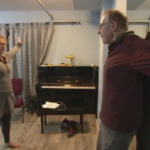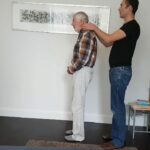Benefits and Research
The Alexander Technique attracts individuals wanting to improve mobility, ease postural discomfort, reduce chronic pain, and manage stress, while others seek lessons to advance their skills in the performing arts and athletic endeavours. Browse the menu lists below to learn more about how Alexander Technique can benefit you.
Use of resources
Please note that the content within the Research & Resources and Videos sections is provided only for general information purposes.
Use of Resources
Please note that the content within the Research & Resources is provided only for general information purposes. Many of the resources, such as books, are not free. Links to other websites or platforms are provided for viewers’ convenience, but ATC does not control or monitor them and accordingly cannot endorse their information or guarantee its accuracy and relevance. The use of content or links to third-party websites is at the viewers’ own risk. Viewers should contact an ATC-certified Alexander Technique teacher with any questions about the application of Alexander Technique to their specific issues.
Parkinson’s Disease
- Benefits
- Resources
- Videos
- Testimonials
Parkinson’s disease is a degenerative, progressive brain disorder. Cardinal (major) symptoms include rigidity, balance issues, tremor and a gradual slowing in daily function. Typically, people with Parkinson’s disease struggle with stooped posture, difficulties walking and vocal strength. In addition to these, patients may experience many other symptoms and problems.
Drugs are administered to Parkinson’s patients to help alleviate symptoms, and brain surgery may be an option for some, but there is currently no cure for Parkinson’s disease. Alexander Technique serves as an adjunct therapy – it works alongside medication to address symptoms that more traditional therapies may not be able to impact.
Because Alexander Technique teachers are movement experts who work with posture, gait and vocal issues, they have a specific skill set to address core Parkinson’s symptoms. A clinical trial in 2005 showed that Alexander Technique had an impact in improving Parkinson’s patients’ ability to manage symptoms and that patients still retained benefits six months later (http://www.alextechiw.co.uk/media/AT_Parkinsons.pdf). A recent laboratory study showed that using Alexander Technique to simply think differently about posture led immediately to measurable improvements in stability and balance (https://www.uidaho.edu/news/news-articles/news-releases/2020-march/032420-improvebalance).
Alexander Technique teachers work with people who have Parkinson’s disease as students, not patients. Together they explore how to approach daily activities differently, from sitting and standing to reaching and rolling over. Teachers may work with caregivers and family members as well, showing them how they can offer more support to patients at home and how to look to their own care, as well.
The benefits of exercise are well documented in recent years for people with Parkinson’s disease. However, many Parkinson’s patients are unable or unwilling to access exercise regimes. Alexander Technique can change both understanding of body mechanics and postural tone in students, even those with Parkinson’s disease. This understanding may allow patients to gain more benefit from traditional exercise regimes. Additionally, by practicing Alexander Technique principles, students are essentially exercising as they carry out their daily activities.
Parkinson’s disease currently affects over 100,000 Canadians and about 4 million worldwide (2020). With a growing and aging population, it is estimated that the number of Canadians living with parkinsonism will double between 2011 and 2031 and that the incidence will increase by 50%.
More research is urgently needed to look at the many possibilities Alexander Technique offers to mitigate the symptoms of this terrible disease, as well as other movement disorders. (Written by Candace Cox.)
“Control should be in process, not superimposed.”
– F.M. Alexander
Articles
Study Summary: “Lighten Up” or “Pull Up”? Alexander Technique-type Instruction and Parkinson’s Disease
Books
Living Daily: Alexander Technique for Parkinson’s Disease
There are no testimonials currently available.








